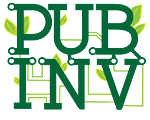We invent things that help all people. We empower inventors, technologists, and students to publish, find, and collaborate on invention ideas through direct coaching, team formation, curation of work, publication, co-working and learning events, and, in some cases, material support.
We challenge the notion that inventions should be reserved for patents and profits. Rather, we invite fellow builders of the future to use their skills for humanitarian purpose. We want to make the future better for everyone. To do this we remove, rather than add, legal barriers to the free use of our inventions. All work done with Public Invention is free and open to all under share-alike public licenses.
The Public Inventor of the future is not a lone genius but a person who is part of a community. We empower Public Invention Teams that embrace the interdisciplinary talents that combine to shape the future: inventiveness, design, writing, art, photography, engineering, administration, fundraising, and other skills we cannot predict. All of our work is in service to nurture humanitarian invention.
Principles
Share everything equally and immediately.
Do not seek patents that imply a monopoly which is the antithesis of sharing.
Work in the light.
Publish successful inventions. Publish failures. Publish mediocrities. Publish everything. Work in the public for the public.
Keep it real.
Always be working towards a real invention that really helps a real human being. It is better to make something tiny and real than to make something grand and awesome that is not real. Inventing a bad roller skate is better than inventing the best toy space fighter.
Don’t build weapons.
Technology is not neutral. Some things are more easily used for good and harder to pervert than others. Invent things that strengthen, heal, help, educate, entertain, empower, enlighten, and ennoble humanity.
Ideas are Cheap.
Invention requires a flash of insight, an inspiration. But that is only 1% of the work of developing an idea.
Seek egalitarian usefulness.
Inventions which make us more equal are better than inventions that make us less equal.
Collaborate whenever possible.
Even if it slows you down, try to involve others whenever you can. They deserve a chance to contribute as well.
Honor and value every contribution.
Some inventions require highly specialized knowledge and skill, such as advanced mathematics; all inventions require general communications. Both common and rare skills are needed and valuable.
A Visual Mission Statement
I created this mission statement using Plectica, a powerful visual concept mapping tool. Plectica allows you to share map; here is the link to this one: https://www.plectica.com/maps/VT6JNQ5AP

Visual Map of the Public Invention Mission Statement
Context
This year I am attempting to turn Public Invention into a true non-profit capable of receiving donations and having 501c3 tax deductibility status. This needs to be done now because a number of costs have arisen. In particular, I recently published a peer-reviewed academic journal article based on the Tetrobot Project. I was rather surprised to learn that I could make it open access (that is, free to all and not behind a pay wall) for $3000. I chose not to pay that personally (I have been self-financing Public Invention for the last 3 years, forgoing income), but it clearly is aligned with the principles of Public Invention to publish openly whenever possible.
Acknowledgement
Many thanks to Nina Bianchi for improving this Mission Statement.
